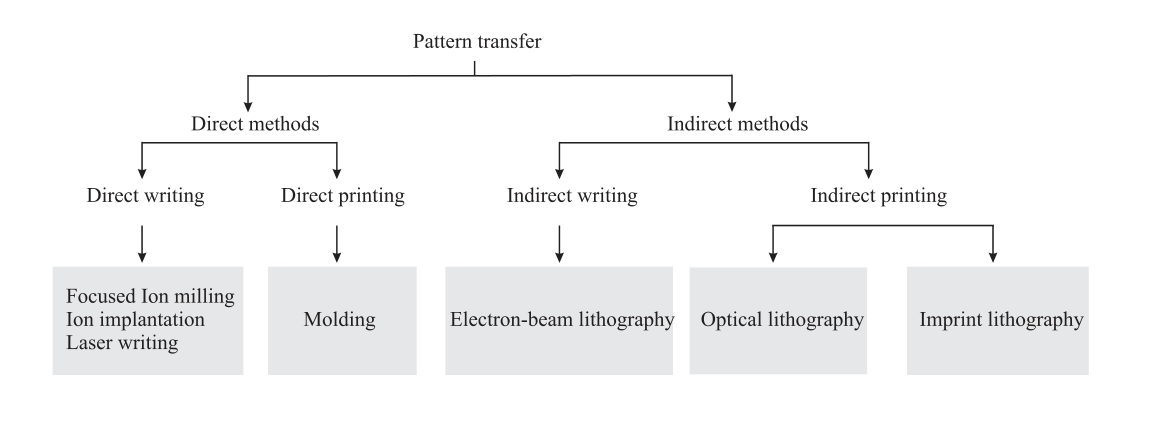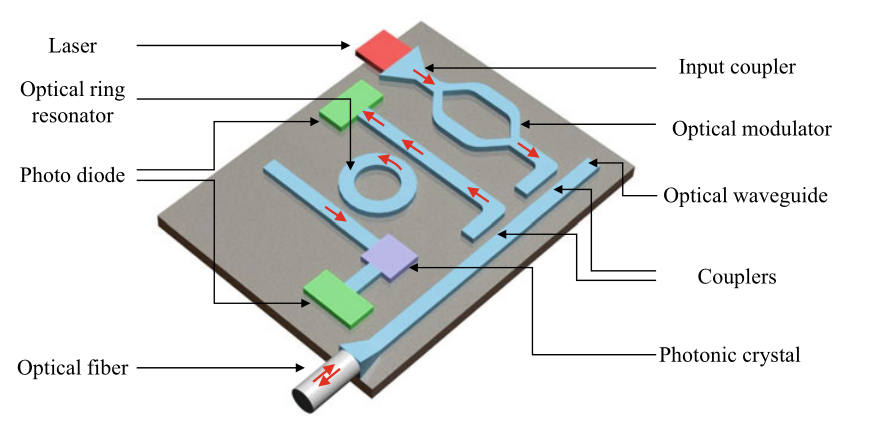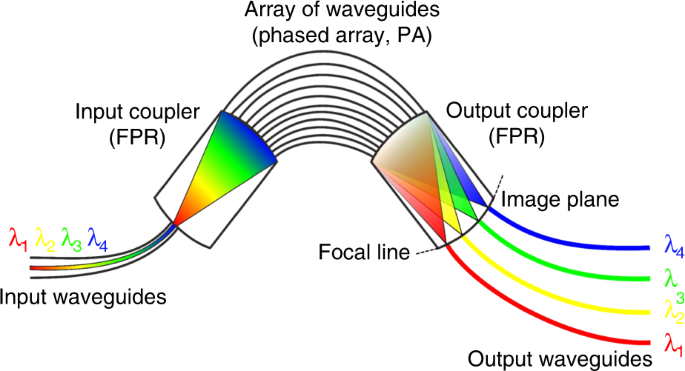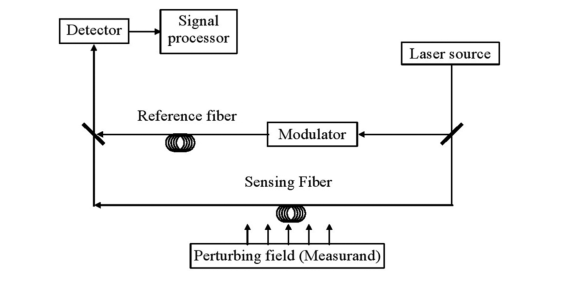Introduction
Photonic integrated circuit (PIC) technology is based on components that work with photons and light particles. Photonic circuits are created from light-conducting materials, and the light is generated by lasers and transmitted in the form of photons or plasmons. Compared with electronic integrated circuits, PICs’ advantages are the higher bandwidth and lower losses; thus, they are suitable for computing and information proceeding. Their fabrication is similar to electronic circuits and may be used in various industries, such as information technologies, medicine, and sensors.
Fabrication and Principle of Work
Circuits work based on the photon or plasmon flow via the transmitters; in order for them to work, firstly, transmitters are generated by lasers, and secondly, they are regulated by mirrors. As a first step, they emerge when the material is excited by the photons and, as a second step, transmit the light as well (Girtan, 2014). Lasers are used similarly to the generators in electric circuits: first, they create a directed photon flow of a specific wavelength, which is either directly transmitted via the material or generates a plasmon flow during the second step (Osgood & Meng, 2022). Couplers with turning mirrors connect various PIC elements together, especially if they are created from different materials (Klamkin et al., 2018). Waveguides connect all other compounds, providing a stable photonic or plasmonic flow.
The optic fiber scheme is shown in Figure 3. It consists of a light-conducting core, supportive cladding, and a jacket for mechanical strength and signal stability. The core is usually made from silicon and germanium oxide with rare earth doping (Gangopadhyay et al., 2020). Optic fibers are used for light transmitting over large distances.
PICs are produced on microchips using various approaches to pattern definition: the circuit pattern is first designed and then assembled on the chip made of silicon or another compound. Examples of the pattern transfer methods are presented in the Figure 1 diagram: one can see that there are direct and indirect methods (Selvaraja, 2011). The desired pattern is created in advance and then used to etch it on the microchip, using a laser in the case of optical lithography or an electron beam for electron-beam lithography (Selvaraja, 2011). Indirect fabrication is the most typical way of PIC microchip fabrication.

To build an electric circuit, one needs a conductor or semi-conductor; to make a PIC, one needs a light-transmitting material. Five categories of materials are usually used: silicon, silicon oxide, niobium-based materials, such as lithium niobate, indium phosphide, and various polymers (Osgood & Meng, 2022). One may see its scheme in Figure 2: photonic crystals, for example, work better when fabricated using niobium oxide-based materials, which electro-optic properties make them the best switching material. Indium phosphide and similar compounds, such as gallium arsenide, are the best for laser fabrication (Klamkin et al., 2018). Silicon is widely used for waveguides due to its availability and extensive experience in working with it (Osgood & Meng, 2022). Polymers, on the other hand, have the most exciting perspectives: there is a wide variety of possible light-conducting organic polymers, and each of them has specific properties useful in different applications.

The use of photonic technology solutions is now commonly used when addressing issues associated with electronic circuits-related issues. Thus, for example, one of the central problems PIC copes with is heat generation. Both speed and capacity of data could be accelerated significantly by introducing a photon-based solution.
Another challenge for operating electronic circuit devices includes the electronic IC’s incompatibility with the widely acknowledged laser technology. Thus, introduced in 2005, the development of laser light as an addition to the traditional EIC systems eventually tampered with the technology’s wavelength spectrum, creating the so-called “quantum noise problem” (Mughees, 2021, para. 4). With the introduction of PIC, data sensitivity and the speed of communication has presented the opportunity for the development of machine autonomy and compatibility between different devices.
To summarize, the main principles of the photonic circuits functioning should be formulated. Similar to electric cables, photons or plasmons are transmitted via optical fiber. The circuit is made from materials with good electro-optic properties, such as refractive index, light absorption, and optic response (Osgood & Meng, 2022). The main components of the circuit are indicated in Figure 2: optical modulators, waveguides, photonic crystals, ring resonators, and couplers. Optic fiber, which is shown in Figure 3, is used to transmit photons or plasmons at large distances, transmitting, thus, large amounts of energy and information, which may be used.
What They Can Do
PICs may replace electronic circuits in microchips due to their lower resistance and, thus, much lesser loss of energy and information. Photonic and electronic circuits are similar in design: while the latter uses electric current, the former uses photon flow (Girtan, 2014). In that way, they can proceed and transmit information, like electronic chips, and thus, may be used in computers and other calculating machines designs. In addition, they may serve as optic sensors with high sensitivity, as even tiny changes in the photon flow will be easily detected (Gangopadhyay et al., 2020). Optic fibers are the basis of the modern Internet and television, transmitting gigabits and terabits of information between the continents (Pleumeekers et al., 2011). Therefore, PICs and optic fibers may proceed and send information with a high performance, which is their most significant advantage.

Industries and Applications
The most common and widespread PICs usage is the fiber-optic communication industry which is crucial for the modern Internet and TV. Optical fiber cables are capable of transmitting high-density information: from 100 gigabits to several terabits (Pleumeekers et al., 2011). Photonics is constantly developing, and the amount of information it can transmit is increasing; future photonics cables may be capable of sending tens of terabits. The higher the wave frequency band that the fiber may transmit, the larger the amount of information. For example, the 100 – 1000 THz range corresponds to approximately 1 Tbit of information (Gangopadhyay et al., 2020). Optical cables have a much smaller size and lower weight than electric cables with comparable bandwidth; in addition, they have a lesser signal loss and higher security because they are less vulnerable to interferences.
Another major industry where PICs are widely used is medicine: directed lasers may be used for tomography and various medical influences. Optical coherence tomography (OTC) is the process of retina scanning, allowing seeing whether the retina is healthy and which problems are present (Rank et al., 2021). The light filtration based on its wavelength may be quickly done with photodiodes, which allow the transmission of only the light with a specific wavelength: the scheme is shown in Figure 4.

In addition, PICs are used in other industries where the energy or information needs to be transmitted or proceeded. The sensor industry is an example: the high sensitivity of photonic circuits makes them a good component of sensors (Gangopadhyay et al., 2020). The scheme of one of such sensors is shown in Figure 5. In medicine, along with imaging and tomography, PICs may be used to generate high-precision tuned lasers to influence tissues: this is useful for surgery or removing damaged tissues almost painlessly (Gangopadhyay et al., 2020). Lastly, their ability to transmit energy in the form of light may be used in the solar battery industry for gathering the energy of the Sun.
As far as the application areas for this technology are concerned, the main spheres include data communication, sensing, and computing (Gangopadhyay et al., 2020). Indeed, the PIC’s extraordinary ability to detect and generate light presents an opportunity for the technology to be introduced to the sensing systems. Sensing and computing areas are also interconnected with the health paradigm. Light-operating technology of the future will provide an opportunity to immediately detect and report health data through the photodetection of light in tissues and body fluids.

Conclusion
Thus, photonic circuits are a robust technology, a powerful method of information transmission and processing using light. PICs are usually produced similarly to electronic integrated circuits: a circuit pattern is created first and then used to print on the silicon chip using lithography. Optic fibers transfer light at large distances, transporting large amounts of information up to several terabits per second. Their advantages make them very helpful in the IT, medicine, and sensors industries where the information proceeding is necessary. As they use light is used for energy transmission, it may be used in the solar energy industry, too.
References
Gangopadhyay, T. K., Kumbhakar, P., & Mandal, M. K. (2020). Photonics and fiber optics: Foundations and applications. Crc Press, Taylor & Francis Group.
Girtan, M. (2014). Is photonics the new electronics?Materials Today, 17(3), 100–101.
Klamkin, J., Zhao, H., Song, B., Liu, Y., Isaac, B., Pinna, S., Sang, F., & Coldren, L. (2018). Indium phosphide photonic integrated circuits: Technology and applications. 2018 IEEE BiCMOS and Compound Semiconductor Integrated Circuits and Technology Symposium (BCICTS).
Mughees, N. (2021). Shedding light on photonic integrated circuits. Electronics 360.
Osgood, R., & Meng, X. (2022). Principles of photonic integrated circuits: Materials, device physics, guided wave design. Springer.
Pleumeekers, J., Kato, M., Evans, P., Corzine, S., Dentai, A., Missey, M., Lambert, D., Lal, V., Nilsson, A., Rahn, J., Sun, H., McNicol, J., Raburn, M., Murthy, S., Studenkov, P., Strzelecka, E., Fisher, M., Thomson, J., Williams, W., & Chen, A. (2011). Large-scale photonic integrated circuits.2011 ICO International Conference on Information Photonics.
Rank, E. A., Sentosa, R., Harper, D. J., Salas, M., Gaugutz, A., Seyringer, D., Nevlacsil, S., Maese-Novo, A., Eggeling, M., Muellner, P., Hainberger, R., Sagmeister, M., Kraft, J., Leitgeb, R. A., & Drexler, W. (2021). Toward optical coherence tomography on a chip: In vivo three-dimensional human retinal imaging using photonic integrated circuit-based arrayed waveguide gratings.Light: Science & Applications, 10(1).
Selvaraja, S. K. (2011). Wafer-scale fabrication technology for silicon photonic integrated circuits. Universiteit Gent.